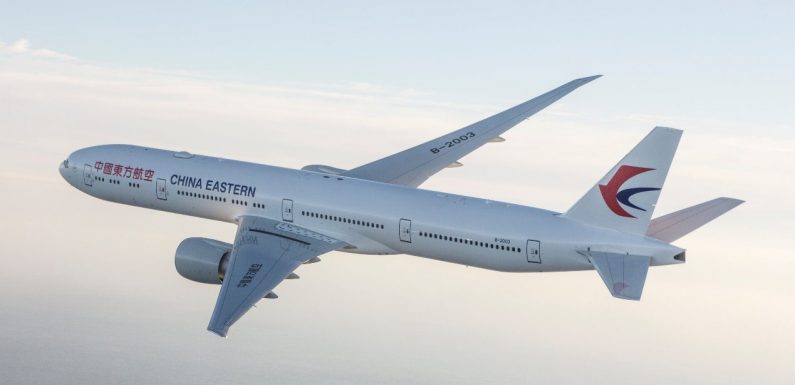
Imagine stepping onto a Chinese-made airplane with outdated movies, scripted English from flight attendants, and corn chowder on the in-flight menu—this could be what travelers experience on China Eastern Airlines. With more than $72 billion in state support, China’s commercial airline is set to operate roughly 1,000 new Comac C919 airplanes, due to take flight before the end of this year. The airline industry is dominated by European planes like the Airbus and the American-made Boeing, which are battling the aviation market against China’s aircraft manufacturer Comac. The company has been testing a new passenger jet called the C919 for short-haul flights, and the C929 for long-haul. It’s all part of the Chinese government’s Made in China 2025 strategy, which aims to reduce China’s dependence on foreign technology.
“National airlines have long been a marker of a state’s status and prestige in the international sphere, so it’s not surprising to see a new airline in China as its importance and influence in global affairs grows,” said Michelle Murray, a professor and chair at the political studies program at Bard College in New York.
But how does China’s first commercial airline differ from the rest? According to Skytrax, China Eastern Airlines is a three-star airline for its level of quality, from seats to service and cleanliness, putting it on par with American Airlines and easyJet. This low-cost international airline is not polished but has unbeatable prices. The cuisine offers both Western-style and Chinese meals (though you may want to steer clear of the rubbery chicken).
On the downside, one travel blogger, Christine Ka’aloa of Grrrl Traveler, said that in her experience, the cabin staff “seemed to treat me like a passenger with second-class needs, when it came to dealing with the comforts of Chinese nationals.” Ka’aloa tells AD: “Chinese technology is strong with innovating of successful Western brands, but the American public is hard won, because Chinese brands cater to Chinese consumers.” She explains: “With the pandemic’s effect on travel, I predict American travelers will stay closer to home with traditional travel brands they know, gravitating toward comfort and safety. They won’t rule out Chinese carriers completely, but it won’t be their first thought.”
Though the flight attendants have some understanding of English, their language skills are limited to a standard set of phrases and they’re not adept at going off-script. In-flight entertainment is limited too, with older films like The Karate Kid from 2010 and a video game featuring the aircraft as the star. However, the company has its own VIP lounge at Shanghai’s Pudong International Airport.
China Eastern was founded in 1988 (the same year Air China was founded), and today offers flights to roughly 250 destinations. It flies to seven destinations across America, including Anchorage, Chicago, and Honolulu. The parent company, China Eastern Air Holding, invested over $4.6 billion into the state-owned airline last fall—part of China’s boost to tourism after the airline lost over $1.28 billion in the first half of 2020 due to the pandemic.
Tourism in China is slowly growing, at least locally. The airline has seen travel demand this past spring reaching beyond pre-pandemic levels with 2,700 local flights a day (the Shanghai and Beijing routes are the most popular). They’re hoping to garner international interest through social media, where they’re highlighting stories from their foreign staff. In one Instagram post, a China Eastern captain from Italy says: “I want to experience the excitement that can only be found in the Orient.”
Among their selection of video commercials on YouTube, one details the airline’s journey to transport China-made vaccines from Beijing to the Dominican Republic, while another tells the story of a delayed flight, due to a doctor carrying a heart transplant to Wuhan (the dramatized ad is based on a true story).
“What is interesting about the commercials for China Eastern Airlines is that they seem to be pitched toward Chinese nationals living abroad and missing home,” says Murray. “This message has a broader resonance; the branding is capturing something relatable, and that message might be useful in promoting China as a tourist destination.”
But will foreigners feel safe boarding a Chinese-built airplane? “How the world will embrace China in a post-pandemic world is yet to be determined,” explains Murray. “As we see here in the United States and in other parts of the world, there is—unfair in my view—blame and animosity cast on China for the spread of the coronavirus. I will not be surprised if this continues and therefore, in the near term, it might not be the most sought-after destination for American tourists.”
Source: Read Full Article









